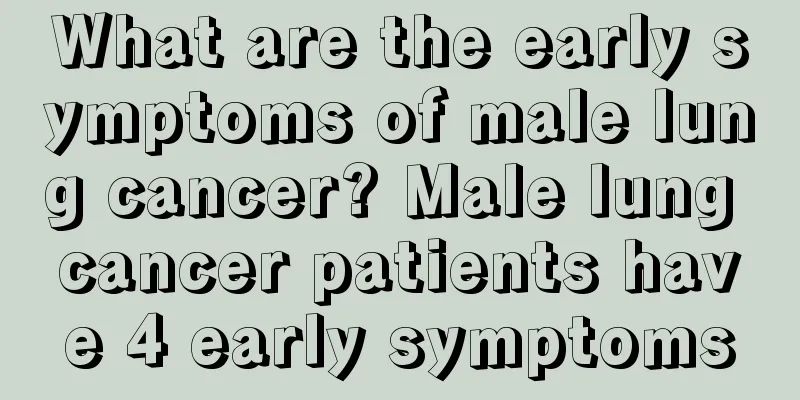Will anemia in physical examination affect employment?

|
Anemia is a relatively common phenomenon. When suffering from anemia, the patient will have symptoms such as pale complexion, frequent dizziness, general weakness, palpitations and shortness of breath. Anemia is quite harmful to physical health. When suffering from anemia, if the symptoms are relatively mild, you can take dietary supplements. If the symptoms are severe, you should go to the hospital for examination and take some treatments under the doctor's advice to improve the symptoms of anemia. Will anemia in the physical examination affect employment? Moderate anemia was found during the pre-employment physical examination. Prompt treatment is recommended. Pay attention to rest and combine work and rest in daily life. Eat a nutritious diet and eat more foods containing iron. For example, animal liver. You can also take some nourishing foods, such as donkey-hide gelatin. It does not affect recruitment. Symptoms of anemia 1. Aplastic anemia Aplastic anemia, abbreviated as "AA", is anemia caused by impaired bone marrow hematopoietic function. Its occurrence is related to contact with certain harmful substances and taking certain drugs, such as benzene, arsenic, iodine amines, chloramphenicol and radiation. In addition to the general symptoms of anemia, patients with this type of anemia often have subcutaneous or mucosal bleeding, as well as chills and fever. 2. Iron deficiency anemia Iron deficiency anemia is most common among women. Iron is an important trace element for hematopoiesis, and iron deficiency in the diet is the main cause of anemia. In addition, gastrointestinal malabsorption, bleeding from gastric and duodenal ulcers, hemorrhoidal bleeding, menorrhagia in women, and functional uterine bleeding in adolescence may all cause iron deficiency anemia. 3. Thalassemia This is an inherited anemia that was originally found in the Mediterranean region. Because the severity of the disease varies, the symptoms are also different. Mild cases may be asymptomatic, while severe cases may experience slow reaction, fatigue, diarrhea, recurrent fever, and hepatosplenomegaly. In the later stages of the disease, there are often serious heart complications. 4. Hemorrhagic anemia This type of anemia is often seen after various acute hemorrhages, such as severe functional uterine bleeding (metrorrhagia) in women, heavy bleeding due to sexual intercourse trauma, and postpartum hemorrhage. If rescue is not timely in this situation, it may lead to shock due to excessive blood loss, or even life-threatening. 5. Nutritional anemia This type of anemia is more common in people with eating disorders or long-term diarrhea. In addition to general anemia symptoms such as dizziness, tinnitus, blurred vision, fatigue, dry and falling hair, patients may also suffer from loss of appetite, diarrhea, mouth ulcers, glossitis, etc. |
<<: How to make clothes dry within an hour
>>: What to do if blisters appear after flea bites
Recommend
What are the anti-aging nutrients
Anti-aging is one of the directions of modern sci...
What are the symptoms of liver cancer patients in the middle stage? 6 most common symptoms of liver cancer in the middle stage
The symptoms of mid-stage liver cancer are betwee...
What are the precautions for driving in snowy weather
No matter who is driving, they should be careful ...
Prevention of renal hamartoma starts with diet
Renal hamartoma is particularly harmful. We must ...
Can I do scraping on my arms?
Gua Sha is a relatively traditional natural thera...
What is the best food for liver cancer patients? Introduction to diet and care methods for liver cancer patients
In dietary adjustment, attention should be paid t...
What abnormalities will appear in urine tests for prostate cancer
What abnormalities will appear in urine tests for...
How to treat prostate cancer? There are four ways to treat prostate cancer
Prostate cancer is very harmful to human health. ...
Prevention of mumps
Each of us cannot live without food every day, an...
How to use a steam eye mask
The usage rate of eye masks is getting higher and...
How often should I check during early pregnancy?
For pregnant women, the early stages of pregnancy...
Old lesions in the left upper lung
In clinical practice, we see many patients asking...
What's wrong with numbness in hands, feet and chest
Nowadays, the incidence of any disease is very hi...
What are the more effective examination methods for tongue cancer?
What are the more effective examination methods f...
Do you understand the symptoms of fibroids?
In modern society, the number of patients sufferi...









